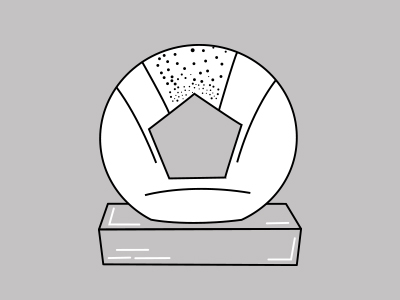For Romania, 2017 was a year rich in public design contests, highly debated and publicized. Remember a few: Bucharest City Hall logo, Centenary logo, Galati City Hall logo, and EU Council Presidency logo, etc. All these competitions have succeeded in transforming the whole country not only into a client but also into a design & branding agency. At first eye, without being a specialist in design, you can see that the whole society seems obsessed with its originality or its absence, making this approach a confusing adventure. Originality in our world is synonymous with “being the first” as a sports competition or as William Ralph Inge called “unproven plagiarism”. If this is the way we think about originality, then Picasso is a thief. And you’re a thief.
Today, originality in design, if there is such a thing, is transitory. I make this statement, based on an immediate argument: we do not have the ability to know every possible design ever designed. It would not surprise me to get to see confident or humiliated designers in public even when someone discovers a design that has been finalized for a personal project forgotten on a hard disk, without that design being published or brought to life. We simply can never assure the client or the whole world that a design in which we work in good faith may at some point be akin to some recently discovered solutions or solutions never seen before publication.
At the same time, I understand the fear of being accused of plagiarism. I was there. You have my empathy. That is why the question “if it’s original?” should be replaced by “how original?”. Hence, we have identified some possible answers to the impossibility of originality in contemporary culture. Let’s take them one at a time:
1. Design is not synonymous with art
A common trap encountered in appreciating a design solution is the association of design with art. In the arts, you can constantly innovate and try new things. Design, as opposed to art, must solve a problem. Design is a job. And you are the designer. Solve problems.
2. Recycled solutions
Nothing falls out of the blue. He also writes in the Bible, “There is nothing new under the sun” (Ecclesiastes 1: 9). Your idea is, in fact, a mix of ideas or a mix of recycled ideas. This is why the designer is a selective collector who comes up with good ideas. Each one has a “morgue folder” in which it gathers various ideas and maybe you will ever insert them up in some project.
3. Minimalism
The minimalist approach in brand design makes design life even more difficult. Think about this as follows: there are only a few ways you can draw a perfect circle. Logos are usually more effective when you keep them simple. Draw a blue circle on the screen and you just stole the Blaupunkt logo. Draw a yellow line and you copy the Visa. Draw an orange square and hit Orange. The fewer the complications a “masterpiece” creates, the more likely someone has already created it.
4. Everything is global, even when it’s not.
Without losing myself in detail, I remember that at the beginning of any project we must identify the market where we find the clients. To be honest, not all businesses will have exposure for every country on this planet, which is why building a strong brand on the “identified market” is probably more important than ensuring 100% originality worldwide. I don’t want you to misunderstand me, there is no excuse for plagiarism and lazy thinking, but I do not think we should be exaggerated in researching every logo/design ever made just because the logo of the Galati store looks like the logo of a company of shoes from China.
I think our limitations can help us find originality, even though they can be frustrating and cause inconsistency. If you want, today’s pure originality came from an accident, where expectations are often not aligned to a grid of goals. I support a redefined originality that allows and celebrates the postmodern culture and militates for mixing and matching it to create the “new”.





